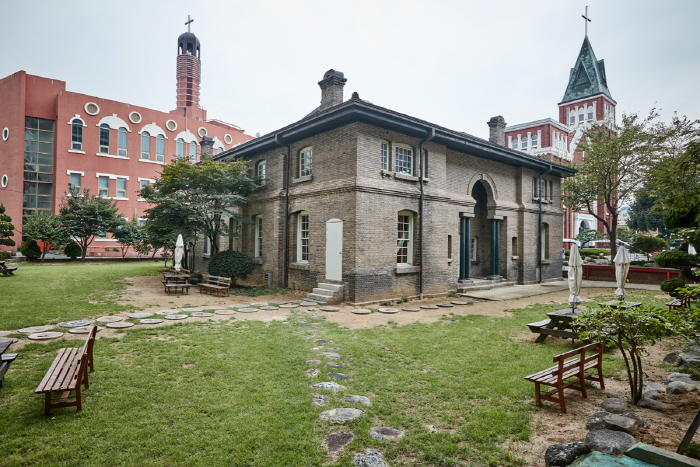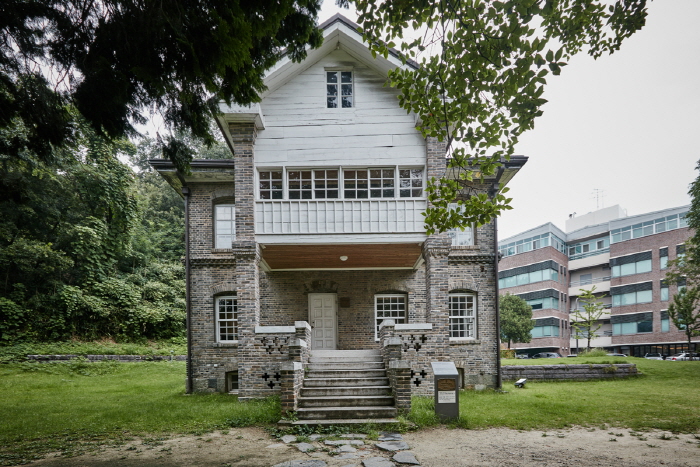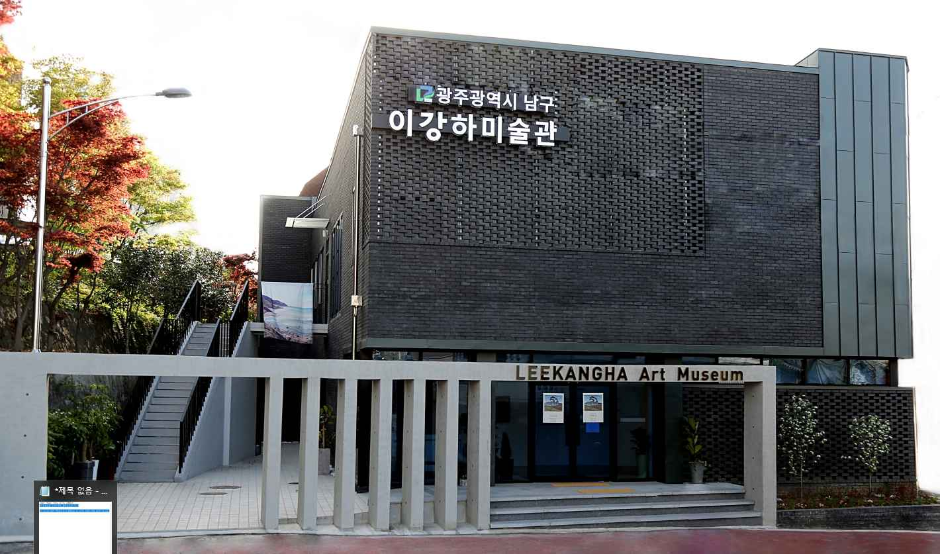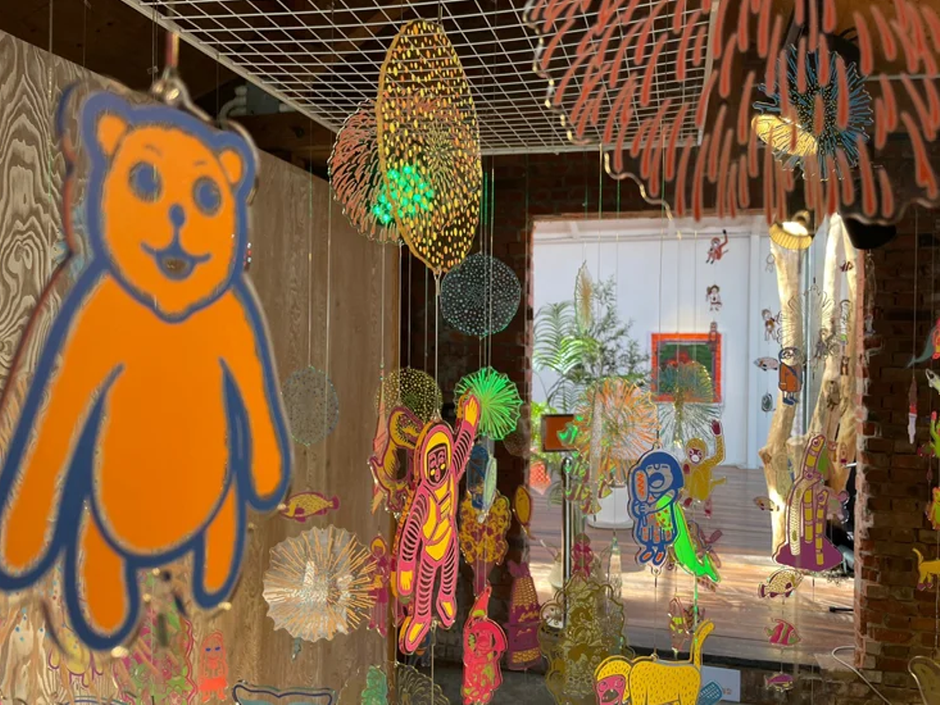Gucci - Shinsegae Gwangju Branch [Tax Refund Shop] (구찌 신세계 광주점)
4.7Km 2024-04-23
1F, 932, Mujin-daero, Seo-gu, Gwangju
-
Balenciaga - Shinsegae Gwangju Branch [Tax Refund Shop] (발렌시아가 신세계 광주점)
4.7Km 2024-04-18
932, Mujin-daero, Seo-gu, Gwangju
-
YSL - Shinsegae Gwangju Branch [Tax Refund Shop] (입생로랑 신세계 광주점)
4.7Km 2024-04-18
2F, 932, Mujin-daero, Seo-gu, Gwangju
-
Beanpole - Shinsegae Gwangju Branch [Tax Refund Shop] (빈폴 신세계 광주점)
4.7Km 2024-06-27
932, Mujin-daero, Seo-gu, Gwangju
-
Owen Memorial Hall (오웬기념각)
4.7Km 2025-10-23
6 Baekseo-ro 70beon-gil, Nam-gu, Gwangju
+82-62-650-7647
The Owen Monument and Memorial Hall is located inside the Christian College of Nursing. The monument was erected in 1914 in memory of missionary Clement Owen who, together with Priest Bae Yoo-ji, was the first missionary to come to Jeollanam-do. The monument was built using the 4,200 dollars collected by Owen’s relatives in the USA after Owen died as a martyr in Gwangju.
Clement Owen came to Yangnim-dong, Gwangju in the 1900s and served as a missionary and medical volunteer with his wife, who was a nurse, before dying of exhaustion and overwork in 1909. Owen had hoped to build a memorial hospital in honor of his grandfather, but died before his plan was materialized. The plaque hanging in the hall honors both men in English and Chinese, reading, “In Memory of William L. and Clement C. Owen.”
A Western-style building with a total footage of around 1,435 meters squared (including the annex building), the monument is said to have been used as chapel and assembly room. Today, the building serves as the auditorium of the Christian College of Nursing. The white, two-story building features a lectern in one corner, with two columns of pews facing the lectern. The second floor balcony stretches along the two walls opposite the lectern.
◎ Travel information to meet Hallyu’s charm – movie “Love, Lies,”
In the film, So-yul and Yeon-hee come here to see the renowned singer Lee Nan-young perform. Owen Memorial Hall has a history as a venue for Christian gatherings, lectures, concerts, graduation ceremonies, and various cultural events in the region. Today, it continues to serve as a space for both religious and cultural gatherings.
Missionary Wilson's House (우일선 선교사 사택)
4.8Km 2025-10-23
20 Jejung-ro 47beon-gil, Nam-gu, Gwangju
+82-62-607-2333
Missionary Wilson’s House is a two-story brick building that sits upon the eastern foothills of Yangnimsan Mountain. Known as the oldest surviving Western-style house in Gwangju, the house is an icon of modern culture and architecture in Korea. The house was built by an American missionary named Wilson in the 1920s (exact date unknown) and was the home of the Wilson family while they stayed in Korea. When the family completed their work in Korea, they sold the house for a very cheap price with the stipulation that the house continued to be used for missionary purposes. The house fell into the possession of the General Assembly of Chonnam Presbyterian Church of Korea in 1986 and now serves as the home office for the Presbyterian Church of Korea.
The square-shaped house consists of a living room, a family room, a kitchen, and a bathroom (1F), several bedrooms (2F), and storage areas and a boiler room (B1). The fact that the entrance of the house faces east is said to be a result of the prevailing architectural culture of Korea at that time. A Netherland-style house built with 55-milimeter thick, gray bricks, the first and second stories are delineated on the exterior with an eye-catching band of bricks.
◎ Travel information to meet Hallyu’s charm - TV series "Hymn of Death"
Here, Woo-jin (played by Lee Jong Suk), Sim-deok (played by Shin Hye-sun), and their troupe rehearsed for their play in "Hymn of Death." The Western-style building, framed by a lush forest backdrop, offers an exotic and picturesque setting.
LEEKANGHA Art Museum (이강하미술관)
4.9Km 2024-11-14
6 3·1manseundong-gil, Nam-gu, Gwangju
The LEEKANGHA Art Museum, opened in 2018, offers a range of exhibitions, educational programs, and a research center. Visitors can explore the life and art world of Lee Kang-ha in different eras through various exhibitions and gain a deeper understanding of art with performances and educational programs. The museum aims to foster empathy and communication to enrich cultural knowledge by using diverse art-culture experience programs.
Art Polygon Horanggassinamu (호랑가시나무 아트폴리곤)
4.9Km 2025-02-04
22 Jejung-ro 47beon-gil, Nam-gu, Gwangju
Located in Yangnim-dong, Art Polygon Horanggasinamu is a multi-purpose cultural space that hosts various programs such as exhibitions, lectures, and performances. In 2021, it was used as one of the venues for the Gwangju Biennale. The space was created by preserving and expanding the original structure of a missionary's garage. Yangnim-dong is home to many modern historical cultural heritage sites and art galleries that connects the past and the present.
Burberry Kids - Shinsegae Gwangju Branch [Tax Refund Shop] (버버리 아동 신세계 광주점)
5.0Km 2024-04-23
8F, 904, Mujin-daero, Seo-gu, Gwangju
-
Burberry - Shinsegae Gwangju Branch [Tax Refund Shop] (버버리 신세계 광주점)
5.0Km 2024-04-23
1F, 904, Mujin-daero, Seo-gu, Gwangju
-

![Beanpole - Shinsegae Gwangju Branch [Tax Refund Shop] (빈폴 신세계 광주점)](http://tong.visitkorea.or.kr/cms/resource/38/3313838_image2_1.jpg)




 English
English
 한국어
한국어 日本語
日本語 中文(简体)
中文(简体) Deutsch
Deutsch Français
Français Español
Español Русский
Русский